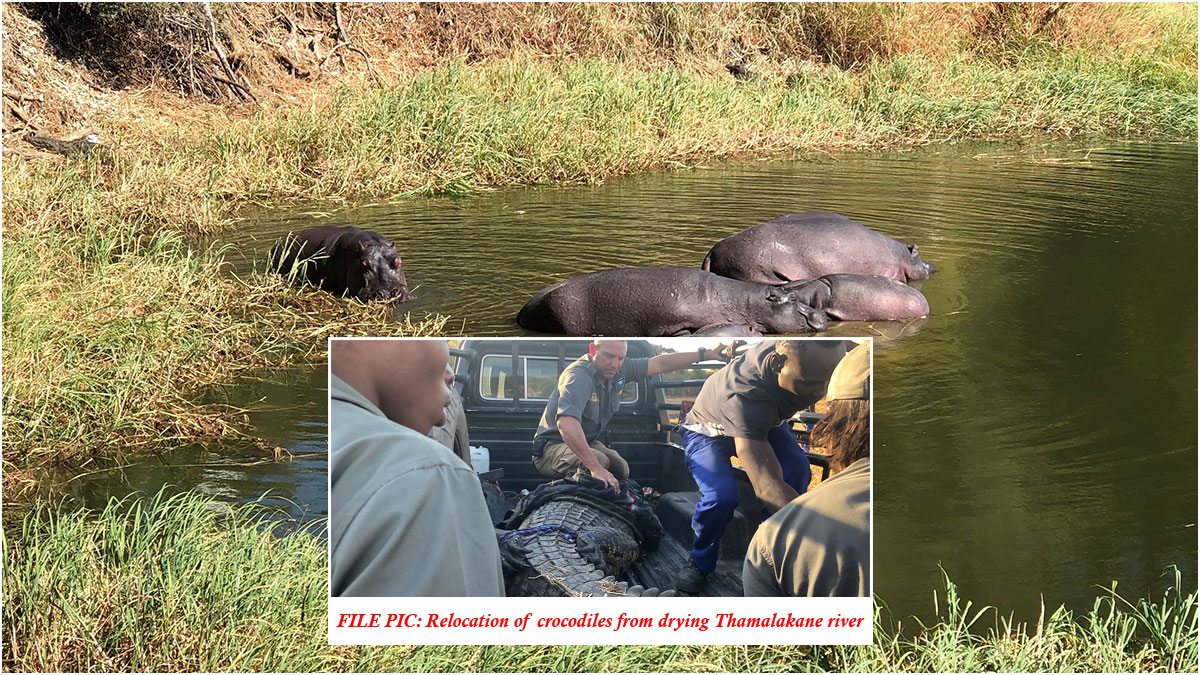Danger in riverbanks as Thamalakane, Dobe, Samedupi rivers dry up
While the rainy season has brought lush vegetation and greenery across much of Botswana, the Maun region remains parched, facing dry conditions despite the flourishing flora.
The Thamalakane River is steadily drying up, and the few remaining water pools where hippos and crocodiles once resided are now evaporating.
This has led to these animals being stranded, posing significant danger to both people and domestic animals.
Despite the pressing situation, the Department of Wildlife and National Parks is limited in its actions.
They can only issue warnings to the public about the looming hazards on riverbanks as they lack the means to relocate these animals to game reserves away from human settlements.
“Our recent inspections of Thamalakane, Dobe, and Samedupi rivers reveal that the last remaining pools are drying up. Many crocodiles and hippos are stranded in these dwindling water sources,” revealed Dimakatso Ntshebe, the regional Wildlife Coordinator in the Northwest District.
Ntshebe emphasized the increasing danger, highlighting that as water recedes, these creatures seek refuge in thickets along the riverbanks.
As a precaution, she urged people to avoid walking near dense vegetation adjacent to the river and to carefully cross the river only at safer and clearer spots.
The danger extends not only to humans but also to livestock competing for the dwindling water sources, often falling prey to these desperate animals that attack and kill them.
“Furthermore, these stranded hippos and crocs face peril, as locals may resort to harming them when they venture out of the pools in search of food,” added Ntshebe.
Addressing the question of relocating these animals, Ntshebe explained the resource constraints: “We indeed aim to relocate them, but we lack the necessary resources to do so. The relocation process, especially for hippos, is quite costly, requiring specialized transportation, capturing equipment, and the construction of temporary enclosures with adequate food.”
Traditionally, the dry season in this region lasts until winter, awaiting water from the annual Angolan floods that flow through the Okavango panhandle.
However, the erratic impacts of climate change have disrupted this pattern. Last year, minimal water arrived in July, drying up by November, indicating inconsistency in Thamalakane’s flooding.
Weather forecasts predict delayed and below-average rainfall, resulting in abnormally dry conditions across Angola, Namibia, Botswana, Zambia, Zimbabwe, Mozambique, Malawi, and Madagascar.
Additionally, while flooding persists in Northwestern and Southern Angola, heightened temperatures are expected in various parts of Southern Africa, including Angola, Botswana, Namibia, and Zambia.






